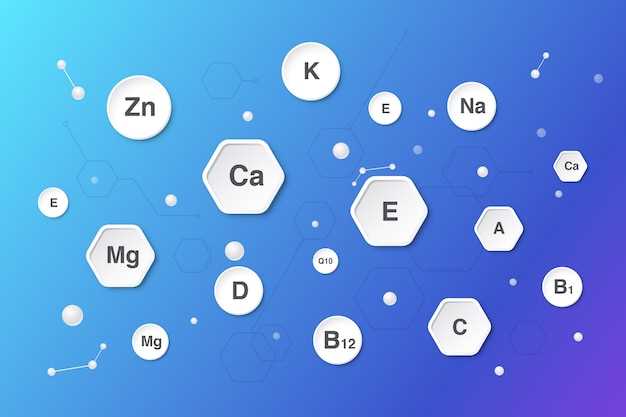
Looking for a trusted source of information on Mirtazapine chemical properties? Look no further! Our comprehensive guide will provide you with all the information you need about this powerful compound.
Mirtazapine is a tetracyclic antidepressant that is commonly used to treat depression and other mood disorders. Its chemical structure includes a diazepine ring fused to a piperazinyl ring, giving it unique pharmacological properties.
Learn more about Mirtazapine’s chemical composition, therapeutic effects, and potential side effects by exploring our in-depth guide today!
Chemical Structure of Mirtazapine
Mirtazapine, with a chemical formula of C17H19N3, belongs to the class of tetracyclic antidepressants. It consists of a tetracyclic ring system with a piperazine moiety attached. The molecular structure of Mirtazapine includes three rings fused together, providing the basis for its pharmacological activity.
The structure of Mirtazapine allows it to interact with various neurotransmitter receptors in the brain, including alpha-2 adrenergic receptors and serotonin receptors. This interaction is crucial for its antidepressant effects and modulation of neurotransmitter levels.
The unique chemical structure of Mirtazapine contributes to its distinct pharmacological profile and therapeutic benefits in the treatment of depression and other mood disorders. Understanding the chemical structure of Mirtazapine is essential for elucidating its mechanism of action and optimizing its clinical use.
Chemical Structure of Mirtazapine
Mirtazapine is a tetracyclic antidepressant drug that acts by blocking adrenergic alpha2-autoreceptors and alpha2-heteroreceptors, increasing the release of norepinephrine and serotonin. Its chemical structure consists of a tetrahydronaphthalene ring fused to a piperazine ring. The molecular formula of Mirtazapine is C17H19N3. It has a molar mass of approximately 265.35 g/mol.
Mirtazapine’s structural formula illustrates the arrangement of atoms and bonds in the molecule, highlighting its unique properties that contribute to its pharmacological effects. The chemical structure of Mirtazapine plays a crucial role in its interactions with specific receptors in the brain, leading to its antidepressant effects.
Physical Properties of Mirtazapine
Mirtazapine is a white to creamy white crystalline powder that is practically insoluble in water and freely soluble in acetone, chloroform, and methanol.
It has a molecular weight of 265.36 g/mol and a melting point of approximately 114-116°C.
- Appearance: White to creamy white crystalline powder
- Solubility: Practically insoluble in water, freely soluble in acetone, chloroform, and methanol
- Molecular Weight: 265.36 g/mol
- Melting Point: 114-116°C
These physical properties of mirtazapine make it suitable for various pharmaceutical formulations and drug delivery systems.
Chemical Properties of Mirtazapine

Mirtazapine, chemically known as (±)-2-methyl-1,2,3,4,10,14b-hexahydro-2H-pyrazino[2,1-a]pyrido[2,3-c][2]benzazepine, is a tetracyclic antidepressant with a unique chemical structure that sets it apart from other antidepressants.
Chemical Structure
The chemical structure of Mirtazapine consists of a hexahydro-pyridine ring fused with a benzazepine ring, giving it a distinctive shape that contributes to its pharmacological activity.
| Property | Value |
|---|---|
| Molecular Formula | C17H19N3 |
| Molecular Weight | 265.35 g/mol |
| Hydrogen Bond Acceptor | 2 |
| Hydrogen Bond Donor | 0 |
| Rotatable Bond Count | 3 |
These chemical properties contribute to the unique pharmacological profile of Mirtazapine, making it an effective antidepressant with reduced side effects compared to other classes of antidepressants.
Synthesis of Mirtazapine
Mirtazapine is synthesized through a multi-step process involving various chemical reactions. The key steps in the synthesis of Mirtazapine include the condensation of 2-methyl-1,2,3,4-tetrahydronaphthalen-1-one with 4,5,6,7-tetrahydro-1H-benzimidazole to form the core structure of Mirtazapine. Subsequent reactions involve the introduction of additional functional groups to the core structure to yield the final compound.
The synthesis of Mirtazapine is a well-established process that ensures the purity and quality of the compound. It involves precise control of reaction conditions and purification steps to obtain the desired product in high yields. The final product is characterized and tested to meet stringent quality standards before being used in various applications.
Applications of Mirtazapine

Several applications make Mirtazapine a versatile pharmaceutical compound. It is primarily used to treat major depressive disorder by affecting neurotransmitters in the brain. Due to its sedative properties, it is also prescribed for managing insomnia with depression. Moreover, Mirtazapine has been found effective in treating post-traumatic stress disorder (PTSD) and generalized anxiety disorder (GAD). Some studies suggest its potential in managing nausea and vomiting in cancer patients undergoing chemotherapy. Its unique mechanism of action sets it apart as a valuable medication in the field of psychiatry and psychopharmacology.
